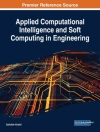Sneak Circuits of Power Electronic Converters
Sneak Circuits of Power Electronic Converters
Work on sneak circuits and related analysis methods for power converters contributes to the reliability of power electronic systems worldwide. Most books on the subject focus on electronic systems; this book is perhaps the first to examine power electronic systems. The authors describe sneak circuit phenomena in power converters, introduce SCA methods for power electronic systems, and propose how to eliminate and make use of sneak circuits.
This book:
* highlights the advanced research works in sneak circuit analysis by a leading author in the field
* is original in its treatment of power electronics converters, going beyond the electronic system level
* is suitable for both introductory and advanced levels
* offers guidelines for industry professionals involved in the design of power electronic systems, enabling early detection of potential problems
This book is geared for researchers and graduate students in electrical engineering, as well as engineers and researchers in power electronics. Researchers in power electronics reliability will also find it to be a helpful resource.
Inhoudsopgave
Chapter 1 Sneak Circuit and Power Electronic System 1
1.1 Reliability of power electronic system 1
1.2 Sneak circuit 3
1.3 Sneak circuit analysis 12
1.4 Power electronic system and sneak circuit analysis 19
1.5 Arrangement of this book 20
References 21
Chapter 2 Sneak Circuits of Resonant Switched Capacitor Converters 23
2.1 Sneak circuits of basic RSC converter 23
2.2 Sneak circuits of high-order RSC converter 47
2.3 Summary 70
References 70
Chapter 3 Sneak Circuits of DC-DC Converters 73
3.1 Buck converter 73
3.2 Boost converter 78
3.3 Buck-boost converter 82
3.4 Sneak circuit conditions of Buck, Boost and Buck-Boostconverters 86
3.5 Cúk converter 88
3.6 Sepic converter 102
3.7 Zeta converter 113
3.8 Sneak circuit conditions of Cúk, Sepic and Zeta converters123
3.9 Summary 125
References 126
Chapter 4 Sneak Circuits of Soft-switching Converters127
4.1 Sneak circuits of Full-bridge ZVS PWM converter 127
4.2 Sneak circuits of Buck ZVS Multi-Resonant converter 149
4.3 Sneak circuits of Buck ZVT PWM converter 157
4.4 Summary 167
References 168
Chapter 5 Sneak Circuits of other Power Electronic Converters 169
5.1 Sneak circuits of Z-source inverter 169
5.2 Sneak circuits of synchronous DC-DC converters 180
5.3 Summary 191
References 191
Chapter 6 Sneak Circuit Path Analysis Method for Power Electronic Converters 193
6.1 Basic concepts 193
6.2 Sneak circuit analysis based on adjacency matrix 204
6.3 Sneak circuit analysis based on connection matrix 216
6.4 Sneak circuit analysis based on switching Boolean matrix228
6.5 Comparison of the sneak circuit path analysis methods 240
6.6 Summary 241
References 241
Chapter 7 Sneak Circuit Mode Analysis Method for Power Electronic Converters 243
7.1 Mesh combination analytical method 244
7.2 Sneak operating unit analytical method 250
7.3 Sneak circuit operating mode analytical method 257
7.4 Results of sneak circuit mode analysis method on Cúkconverter 268
7.5 Summary 269
References 270
Chapter 8 Elimination of Sneak Circuits in Power Electronic Converters 272
8.1 Sneak circuit elimination for resonant switched capacitorconverters 273
8.2 Sneak circuit elimination for Z-source inverter 280
8.3 Sneak circuit elimination for Buck ZVT PWM converter 285
8.4 Summary 294
References 294
Chapter 9 Application of Sneak Circuits in Power Electronic Converters 296
9.1 Improvement of power electronic converter based on sneakcircuits 296
9.2 Reconstruction of power electronic converter based on sneakcircuits 307
9.3 New functions of power electronic converter based on sneakcircuits 315
9.4 Fault analysis of power electronic converter based on sneakcircuits 323
9.5 Summary 336
References 336
Over de auteur
Bo Zhang South China University of Technology, P. R. China.
Dongyuan Qiu South China University of Technology, P. R. China.












